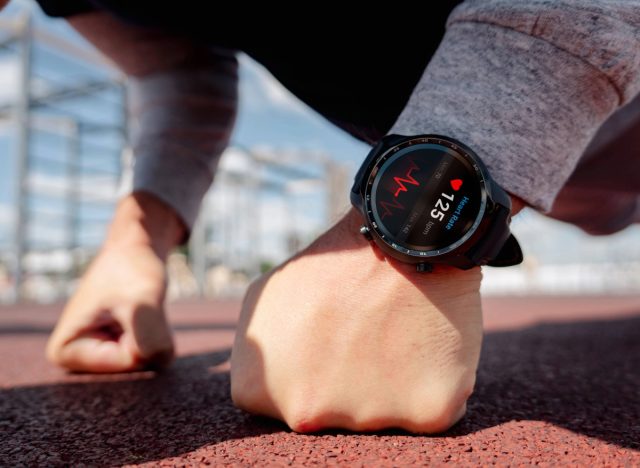Here’s How To Calculate Your Fat-Burning Heart Rate

The more insight you possess for your workouts, the more successful they become. That’s why it’s important to understand how to calculate your fat-burning heart rate and then implement this knowledge into your sweat sessions to maximize your results.
While calculating your fat-burning heart rate might seem daunting at first, fear not—it’s simpler than you think. And the payoff? Let’s just say it’s worth every bit of effort. Suddenly, your exercise routines become laser-focused on precisely what your body needs to incinerate stubborn calories and crush your weight-loss goals.
Whether you’re a die-hard fan of heart-pounding HIIT sessions, thrive on the energy of circuit training and intervals, or prefer the steady burn of long, endurance-focused workouts, knowing your fat-burning heart rate ensures that every step you take brings you closer to your ultimate fitness goals.
Here’s how to calculate your fat-burning heart rate:

Calculating your fat-burning heart rate isn’t rocket science, but it requires some math. The first step is determining your maximum heart rate (MHR), which you can estimate by subtracting your age from 220. Once you have your MHR, you can pinpoint your fat-burning zone, which typically ranges from 60% to 70% of your MHR. This zone is where your body primarily utilizes fat as a fuel source. To find your fat-burning heart rate range, multiply your MHR by 0.6 and 0.7. Voila! You’ve now uncovered the sweet spot where fat burns like wildfire.
The benefits of knowing your fat-burning heart rate for workouts:

Once you know your fat-burning heart rate, you hold the key to unlocking the full potential of your workouts. By maintaining your heart rate within the fat-burning zone during cardio exercises, you’re maximizing the efficiency of your calorie burn. This means you can burn more fat in less time, making your workouts not only more effective but also more time-efficient.
Understanding your fat-burning heart rate empowers you to customize your workouts to your fitness goals. Whether you’re striving to lose weight or enhance your endurance, keeping your heart rate in the fat-burning zone ensures you’re on the right path to achieving your desired results.
The best workout types for increasing your fat-burning heart rate:

Now that you’ve grasped the essentials of calculating your fat-burning heart rate, it’s time to apply that knowledge in the gym. While any type of exercise will get your heart pumping, certain workout styles are particularly adept at ramping up fat burning.
High-intensity interval training (HIIT) takes center stage in this regard, featuring intervals of intense effort followed by brief recovery periods. HIIT not only skyrockets your heart rate during the workout but also sustains it at an elevated level post-exercise, triggering a prolonged fat-burning phenomenon known as the afterburn.
Alternatively, circuit training variations, such as intervals, AMRAP (As Many Rounds As Possible), or EMOM (Every Minute on the Minute) sessions, offer equally effective fat-burning potential.
Furthermore, steady-state cardio workouts, like brisk walks or sustained jogging, maintain an elevated heart rate over an extended period, engaging numerous muscle groups and maximizing calorie burn for optimal fat-loss results.









